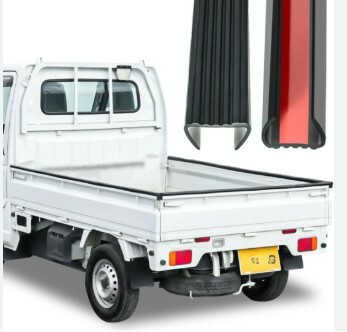The Subaru Sambar, a popular mini truck and van in Japan, has built a reputation for its compact size, versatility, and reliability. It has been a staple for businesses and individuals who need a small yet capable vehicle for transporting goods or passengers. With its compact design, the Subaru Sambar packs quite a punch in terms of utility and performance. However, like all vehicles, its parts undergo wear and tear over time. Understanding the key Subaru Sambar parts can ensure that you keep your vehicle running smoothly and safely.
In this article, we will cover the 7 essential Subaru Sambar parts you need to know about, along with tips on how to maintain or replace them to keep your Sambar in optimal condition.
1. Engine Components: The Heart of the Sambar
At the core of any vehicle is its engine, and the Subaru Sambar is no exception. The Sambar is equipped with a compact, reliable engine that powers its small yet mighty frame. Most models come with a 660cc engine, which is small enough to comply with Japan's Kei car regulations but still provides enough power for urban delivery or light-duty work.
Key Subaru Sambar Engine Parts:
- Cylinder Head: The cylinder head plays a critical role in housing the valves and facilitating the intake and exhaust processes. It’s essential for keeping the engine running efficiently. If your Subaru Sambar starts showing signs of reduced power or poor fuel efficiency, a problem with the cylinder head could be the culprit.
- Timing Belt: This part ensures that the engine’s camshaft and crankshaft rotate in sync. Replacing the timing belt at regular intervals is essential to avoid catastrophic engine failure.
- Spark Plugs: Spark plugs are essential for igniting the fuel-air mixture within the engine. Over time, they can wear out, leading to poor acceleration and reduced fuel economy.
Maintenance Tips: To ensure optimal engine performance, keep an eye on your Subaru Sambar’s engine components. Regularly check the spark plugs and replace them every 30,000 miles or as recommended by the manufacturer. If you notice a lack of acceleration or strange noises coming from the engine, inspect the timing belt and cylinder head for potential issues.
2. Transmission and Gearbox: Smooth Shifting and Power Delivery
The Subaru Sambar is designed to handle a variety of driving conditions, including city streets and rural roads. As such, its transmission and gearbox play a significant role in ensuring smooth shifting and efficient power delivery to the wheels. Whether you’re driving a 5-speed manual or an automatic transmission, it’s essential to ensure these parts are in good condition to maintain the vehicle’s performance.
Key Subaru Sambar Transmission Parts:
- Clutch System (Manual Transmission): For Sambar owners with a manual transmission, the clutch is one of the most critical parts. A worn clutch can result in slipping or difficulty changing gears. Keep an eye on the clutch for signs of wear and replace it when necessary.
- Shifter Linkage: The shifter linkage connects the gear shifter to the transmission. If this part becomes loose or worn, it can cause difficulty in shifting gears.
- Transmission Fluid: Transmission fluid lubricates the internal components of the gearbox. Regular checks and fluid changes are necessary to prevent transmission failure and ensure smooth shifting.
Maintenance Tips: To maintain the Subaru Sambar’s transmission, regularly check the transmission fluid level and ensure it’s clean. If you drive a manual transmission, pay close attention to the clutch and shifter linkage. If you notice difficulty shifting gears, strange noises, or a slipping clutch, consider having the system inspected by a professional mechanic.
3. Suspension System: Handling and Ride Comfort
The suspension system of the Subaru Sambar is designed to provide a smooth and comfortable ride while also improving handling and stability. Whether you’re navigating bumpy rural roads or cruising through urban streets, a properly functioning suspension system is essential for vehicle control.
Key Subaru Sambar Suspension Parts:
- Shock Absorbers: Shock absorbers help dampen the impact of bumps and rough surfaces, making for a smoother ride. Over time, they can wear out, resulting in a bumpy or uncomfortable ride.
- Springs: The springs in the suspension system support the weight of the vehicle and allow for proper handling. If your Sambar starts to feel off-balance or doesn’t handle well, it may be time to inspect the springs.
- Ball Joints and Bushings: These parts connect various suspension components and provide flexibility in the system. If the bushings or ball joints are worn, you may experience uneven tire wear or steering problems.
Maintenance Tips: Regularly inspect your Subaru Sambar’s suspension system to ensure it’s in good working order. If you notice the vehicle bouncing excessively or handling poorly, it could indicate worn-out shock absorbers or springs. Additionally, check for unusual tire wear, as this can often be a sign of suspension problems.
4. Braking System: Safety First
The braking system in your Subaru Sambar is, without question, one of the most critical parts of your vehicle. Ensuring that the brakes are functioning correctly is paramount to the safety of both the driver and passengers. Whether you’re stopping for a traffic light or avoiding an obstacle on the road, having reliable brakes is essential.
Key Subaru Sambar Braking Parts:
- Brake Pads: Brake pads are one of the most commonly replaced parts in the braking system. Worn brake pads can lead to reduced braking efficiency and increased stopping distance. Check the pads regularly and replace them when they get too thin.
- Brake Discs/Rotors: The brake rotors work in conjunction with the brake pads to slow down the vehicle. If you hear squealing or grinding noises when braking, it may be time to inspect or replace the rotors.
- Brake Master Cylinder: The master cylinder is responsible for generating the hydraulic pressure needed to activate the brakes. If the pedal feels spongy or unresponsive, the master cylinder could be failing.
Maintenance Tips: To maintain the Subaru Sambar parts braking system, regularly check the brake pads and replace them if they show signs of wear. If the brakes are making noise or if you notice a longer stopping distance, have the brake discs and master cylinder inspected. Regular fluid changes are also essential to keep the braking system functioning properly.
5. Electrical System: Powering Your Vehicle
The electrical system in the Subaru Sambar powers everything from the lights and dashboard to the engine’s ignition system. While the electrical system is relatively simple in design, it’s essential to maintain the various components to prevent issues with starting the vehicle or running electrical accessories.
Key Subaru Sambar Electrical Parts:
- Alternator: The alternator is responsible for recharging the battery and providing power to the electrical system while the engine is running. If your Sambar’s electrical components begin to malfunction or if the battery warning light comes on, it could indicate a problem with the alternator.
- Battery: The battery stores electrical energy for starting the engine and powering accessories. A weak or dead battery can prevent your Sambar from starting or cause electrical glitches.
- Fuses: Fuses protect the electrical system from damage due to excess current. If certain electrical components stop working, a blown fuse may be to blame.
Maintenance Tips: To maintain the Subaru Sambar’s electrical system, regularly inspect the battery for signs of corrosion and ensure it’s fully charged. Check the alternator for any issues with power generation, and replace any blown fuses to restore functionality to electrical components.
6. Exhaust System: Emissions Control and Performance
The exhaust system of your Subaru Sambar ensures that harmful gases are properly filtered and expelled from the engine, keeping both the environment and the vehicle's engine safe. Additionally, the exhaust system contributes to the overall performance of the engine by managing pressure levels and exhaust flow.
Key Subaru Sambar Exhaust Parts:
- Catalytic Converter: The catalytic converter plays a crucial role in reducing harmful emissions by converting harmful gases into less harmful substances. A failing catalytic converter can cause poor engine performance and increase emissions.
- Muffler: The muffler reduces noise from the exhaust system. If you notice a loud, unpleasant noise coming from the vehicle’s rear, the muffler may be damaged.
- Exhaust Pipes: Exhaust pipes route the gases from the engine to the back of the vehicle. Over time, they can rust or develop leaks, leading to reduced engine efficiency or unpleasant smells.
Maintenance Tips: Regularly inspect the exhaust system for rust or damage, especially around the catalytic converter and muffler. If you notice unusual smells, poor acceleration, or a decrease in fuel efficiency, have the exhaust system checked for leaks or blockages.
7. Body and Exterior: Durability and Protection
The body and exterior parts of the Subaru Sambar are more than just aesthetic features. These parts protect the vehicle’s internal components from the elements and contribute to its overall durability and safety.
Key Subaru Sambar Body Parts:
- Bumpers: Bumpers absorb the impact of minor collisions and help protect the vehicle’s body and frame. Damaged bumpers should be replaced to ensure maximum safety.
- Windshield and Wipers: The windshield provides protection from debris and weather while ensuring clear visibility. Worn-out wipers can result in poor visibility in rainy conditions.
- Headlights and Taillights: Functional headlights and taillights are essential for nighttime driving. If either of these lights goes out, they should be replaced immediately.
Maintenance Tips: Regularly check the body parts for rust, dents, or damage. Replace broken headlights, taillights, and windshield wipers to ensure safe driving. Keep the bumpers in good condition to protect the vehicle in case of accidents.
Conclusion
Owning and maintaining a Subaru Sambar involves keeping an eye on its most essential parts to ensure that the vehicle continues to run smoothly for years. The engine, transmission, suspension system, braking system, electrical system, exhaust components, and body parts are all vital for the overall performance and safety of the Sambar. By regularly checking and maintaining these components, you can ensure that your Subaru Sambar stays reliable and ready for any task, whether it’s a delivery, a family outing, or an off-road adventure.
Remember to always consult your vehicle’s manual for specific maintenance schedules and consult with professional mechanics when needed to keep your Subaru Sambar in top shape.















































Comments